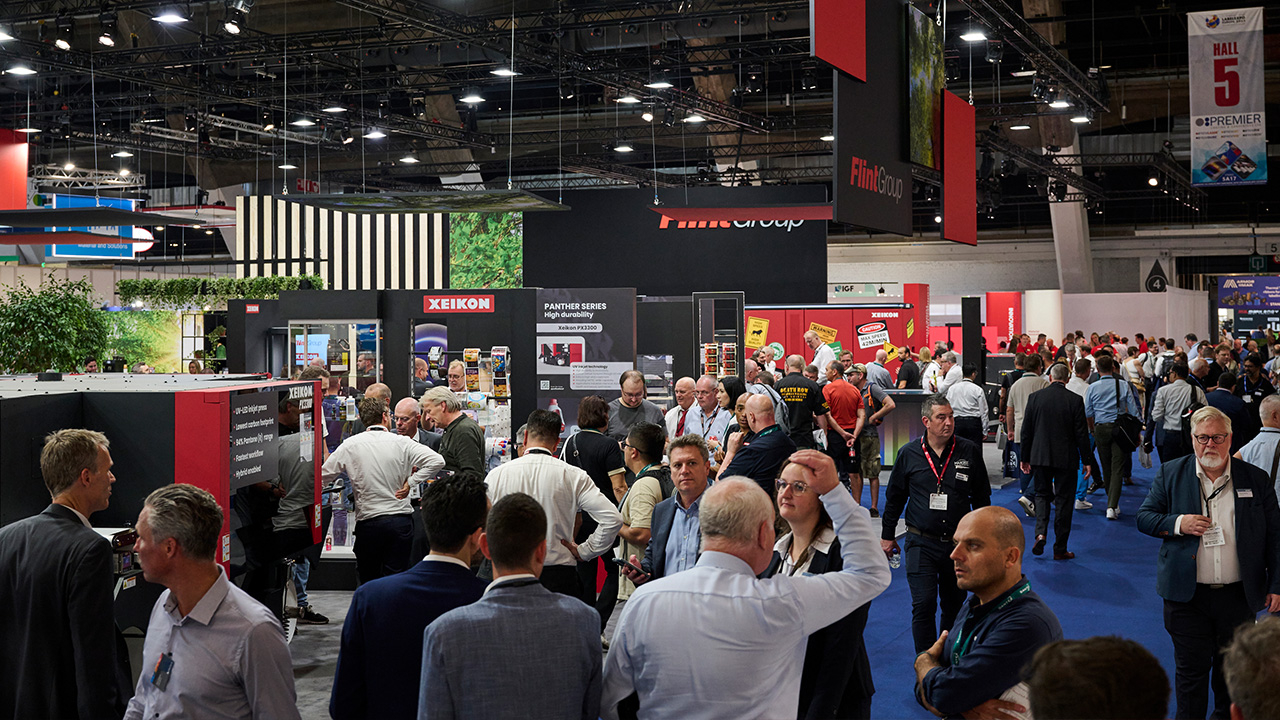Digital printing offers extended opportunities
While the digital label press market to date has been dominated by industry pioneers HP Indigo and Xeikon, the past couple of years has seen over 15 new digital inkjet presses being launched, as well as further models from the main market leaders – many of these presses being presented for the first time at the Labelexpo show in Brussels last year. Indeed, current analysis indicates that there are now at least 36 different makes and models of digital label presses available to converters from some 30 suppliers.
Such has been the response to the opportunities and sales growth created by label converters investing in digital presses that installations of new digital presses annually now make up some 15 percent of all narrow web label presses installed worldwide each year, while the value of digital label sales grows annually at up to 36 percent – against just 4 or 5 percent annual growth for conventionally printed labels. Certainly a powerful argument for continued investment in digital technology.
Now those same benefits are increasingly being extended into other types of labels – shrink sleeve, heat transfer, etc – as well as into new opportunities within the printed packaging sectors, with digital printing now being used for the production of high quality printed flexible packaging, tubes, cartons, bottle top foils, sleeves, containers and pails, even games and competitions incorporating variable information.
Major brand owners, such as Heineken, have already taken advantage of digitally printed shrink sleeve labels for market promotions, while many other brands are currently evaluating or using the benefits of digital technology for new label and packaging solutions.
While the web widths of the toner-based label presses of HP Indigo (liquid toner) and Xeikon (dry powder toner) are currently in the 330/340mm range, the new developments in integrating conventional printing with digital UV inkjet printing now allow easier scalability of conventional/digital presses, moving from the more traditional narrow webs up to webs of 420mm (Nilpeter Caslon) or even 630mm (Agfa :Dotrix). Such developments further widen the potential and opportunities for digital presses in the printed packaging field.
Front end progress
But it is not just digital printing presses that have advanced significantly in the past few years. It is also developments in digital front ends, in automation and integration of digital solutions through the production chain, in new digital software solutions, in workflow organization, in on-line color management and in ‘color guaranteed’ printing.
Becoming a successful digital label or package printing converter is certainly not just about buying a digital press to go into the conventional printing plant; it also very much to do whether the pre-press operation is also ready for digital print.
Color control is definitely a key element in the success of digital printing, not just CYMK, but also very much spot color matching. Pre-press really has to be the main focus to having the fast turnarounds that digital printing offers. The press will do what it can; there’s a lot of excellent technology in the market, but if the converter hasn’t got pre-press sorted it can provide a number of challenges. Pre-press must support fast job turnaround, while unsuitable pre-press set-ups will jeopardize production and performance.
From the print-buyer point of view there are also a number of value drivers to using digital printing. Ensuring quality and compliance is very important Taking cost out of the process obviously, and accelerated time to market so that products can enter the market quicker, as well as offering all sorts of value added services (the converter just delivering a label is pretty much part of the past). Converters today have to change their service model according to the new requirements from the various players within the supply chain – and of course expand the scope of the business.
Instrumental in achieving these value drivers are having an end-to-end supply chain integrated solution and making sure that all of the players within the supply chain talk to each other and collaborate, preferably online so that costly breaks between communication are eliminated.
According to pre-press supplier EskoArtwork, ‘brand equity’ is definitely very important, e.g. the accurate reproduction of spot colors. So is the need to communicate print; entering into communication with customers, with suppliers, or with people in the converter’s own organization or maybe from a different location. There are also many forms of automation possible. Postpone the decision on whether or not a job will go digital or conventional as late as possible in the production process. Reduce errors i.e. eliminate as many interactive operator steps as possible, and also DO NOT make a second copy of a job if that job is switched to digital – this only doubles up the copies of a job and opens the door wide for errors.
Then there is waste reduction; business expansion; expansion of services offered to the customer; and of course last but not least; unattended digital printing and die-less converting. And, at the end of the day, the thing that everybody wants; maximizing press uptime to print as many jobs as possible each day.
Added to these pre-press and workflow strategies and solutions are all the continuing advances in in-line and off-line finishing systems for digitally-printed labels and packaging and the benefits of this rapidly growing technology are further multiplied. While conventional die-cutting and varnishing have been the minimum finishing options for digital label presses to-date, the latest equipment is now available with options for hot or cold foiling, embossing, inkjet personalization, 2D barcoding, booklet insertion, hologram registration, flat-bed screen printing, sheeting, over-laminating, 100% web inspection, turret rewinding or slitter rewinding if required.
All the main suppliers of digital print finishing equipment now also offer laser cutting solutions. Certainly there is now an array of cost-affordable laser cutting equipment for the label and package printing converter to choose from. Cutting speeds of laser cutters will depend on a number of variables, including material thickness, amount of cutting required, amount of small radius curves and the amount of jumping between features.
Laser cutters are now able to take any vector-based digital image – perhaps generated on an EskoArtwork system – and import this into the cutter’s operating software so as to generate the job set-up within a few minutes. Using digital laser cutting enables converters to move from artwork to finished printing and die-cutting within a very short period of time.
While the software, hardware, applications and markets for digital label (and package) printing have developed rapidly over the past few years, many label, packaging, brand owner and retail groups still have a perception of digital that is somewhat out-of-date in terms of quality, run lengths, solutions and potential.
All that has changed. Digital is now regularly used for run lengths of 50,000 or more – a market opportunity which represents two-thirds of conventionally printed label jobs. Quality today is excellent. Indeed many label producers quote jobs for both conventional and digital and let the customer decide. Many customers regularly choose digital from choice. The breakeven or crossover point between digital and conventional has certainly extended considerably in recent years.
Markets and applications for digitally printed labels now include the key end-user sectors of food, health, beauty and cosmetics, wines, beers and spirits, pharmaceuticals, household cleaning and industrial products, as well as increasing inroads into other sectors such as computers, oil and petroleum products, automotive, white home goods appliances, home maintenance, other retail and consumer electronics.
What seems certain is that this list will continue to grow rapidly, while the benefits of digital printing are now starting to also be found in a wide range of flexible packaging, sleeve, tube, carton, etc, applications. Indeed, recent research indicates that up to 15 percent of the installed digital label presses are already producing digitally printed flexible packaging
Such rapid advances will ensure that the Digital Area at Labelexpo Americas this year will have much for visitors to see. New makes and models of press, upgraded pre-press solutions, automation software, finishing equipment, etc, as well as seminar presentations on the latest trends and developments and, for those coming new to digital printing, a masterclass on how to get the best out of a digital printing investment.
Before then, a second Digital Label Summit will be held in
It is no longer a question of thinking about investing in or using digital label printing, it is more about not being left behind in a rapidly evolving and increasingly profitable printing sector.
Stay up to date
Subscribe to the free Label News newsletter and receive the latest content every week. We'll never share your email address.


